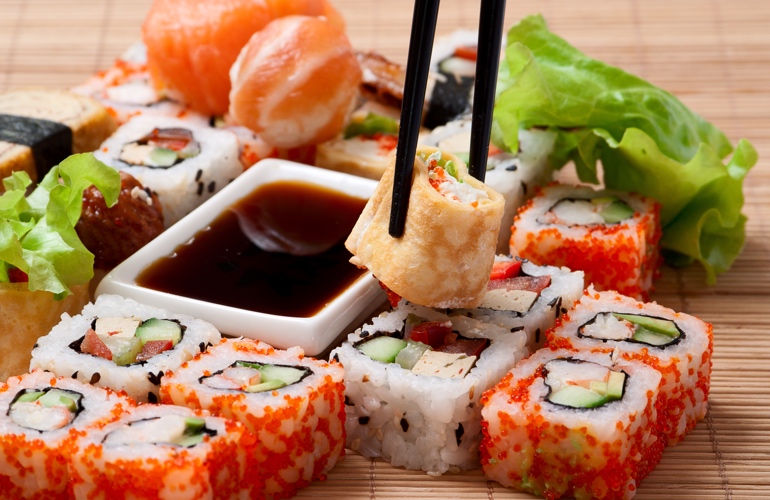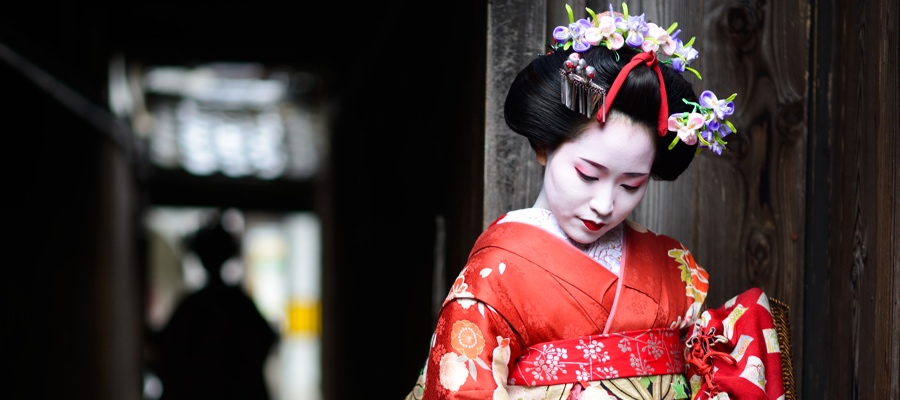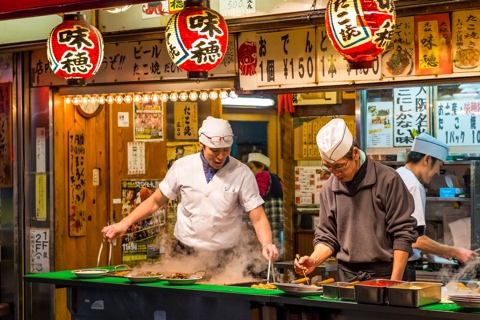Culture of Japan - Discover the traditional features of the sunrise country
Japan is a country famous for its many unique cultural traditions and customs, which are expressed in various forms in ceremonies, festivals, parties, daily life, etc. This tradition makes the life of the Japanese people more interesting. To better understand the culture of the sunrise country, let's take a look at the following facts:
1. Kimono - traditional clothing
Kimono means “something one wears” in Japanese. The Kimono has been used by Japanese people for several hundred years. Today, due to international integration and the nature of life, the kimono is no longer used every day as it used to be, however it is frequently used in festivals, parties or new year's day. The special feature of the Kimono is that it comes in only one size, the wearer only needs to tighten it with a belt made of silk. In addition, putting on a kimono is just very time consuming, and almost impossible to do it on your own. The kimono wearer must wear a Wooden Clogs and white socks.

2.Japan - sunrise country
Japan is a country located in the Pacific ocean. It is situated off the mainland of the Asian continent. The country consists of more than 6,000 small islands. There are a lot of legends related to the origin of its name. In fact, Japan literally means “sun origin”. It means that the country is originated from the sun. The most popular legend shows the Chinese influence in naming the country. According to the legend, Shotoku, a Japanese prince was attracted by Chinese culture and civilization. This is why he introduced some Chinese common cultural elements. Some of these elements are Confucian education, the Chinese calendar, and Buddhism. In his letter addressed to Sui emperor, he referred to himself as the Sun of the Heaven. It’s due to the fact that the sun rises from the Japanese side. Then, the Sui dynasty started to refer to Japan as Nihon, due to the same fact. Nihon literally means “sun origin”.

3. Tea ceremony
Japan is a country of drinkers and one of the most traditional drinks is green tea. In fact, there are a lot of different words for green tea in Japan, but one of the most common is matcha, which refers to the finely ground, powdered tea that is used in Japanese tea ceremonies.
The Japanese tea ceremony (called Chanoyu, Sado or Ocha in Japanese) is a choreographic ritual of preparing and serving Matcha together with traditional Japanese sweets. Preparing tea during this ceremony means pouring all one's attention into the predefined movements. It requires adaptability since every occasion and different season calls for special and unique preparations, choice of utensils or flower arrangements for tea-meeting. Furthermore, one of the main purposes of the tea ceremony is simply enjoying the hospitality of the host in an atmosphere distinct from the fast pace of everyday life.

3. Sake
Sake is a traditional low alcohol drink made from rice through various stages of fermentation and that follows a great number of rules. Japanese will also use different alcohols at different times. In Japanese culture, young people have to pour alcohol for the older people and when someone pours for your sake, you need to keep the glass with one hand and the other hand should be under the cup in order to show courtesy.
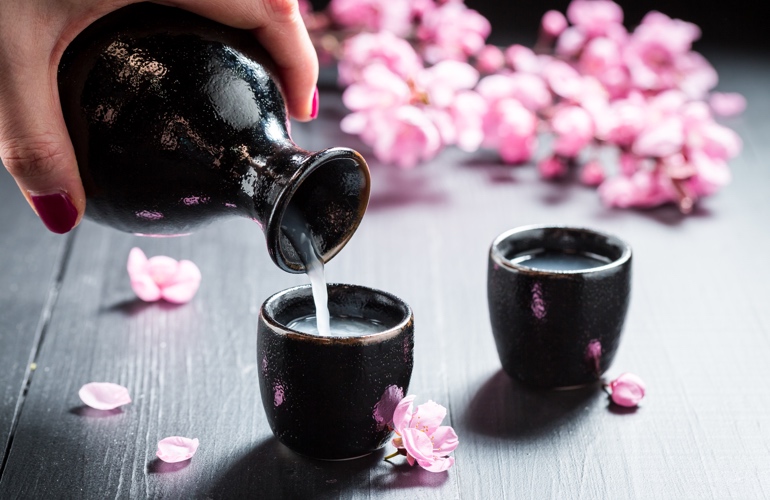
4. Japanese communication style
The salute is an important tradition of the Japanese. For them, the ritual is one of the top priorities. The way a person judges a person depends not only on the way he speaks or his clothing but on his attitude, gesture, and manner of greeting.
The Japanese use the following 3 types of greetings:
- Saikeirei: bent down very slowly is the highest form of showing deep respect and it is often used before the altar in the Shrine, temple of Buddhism, before the national flag, or before the Emperor.
- Normal bow: body bent to 20-30 degrees and hold for 2-3 seconds. If you are sitting on the floor that you would like to salute, put your hands on the floor, palms folded 10-20cm apart, head lowered 10-15cm from the floor.
- Bow slightly: body and head only slightly stooped for a second, with two hands to the sides.
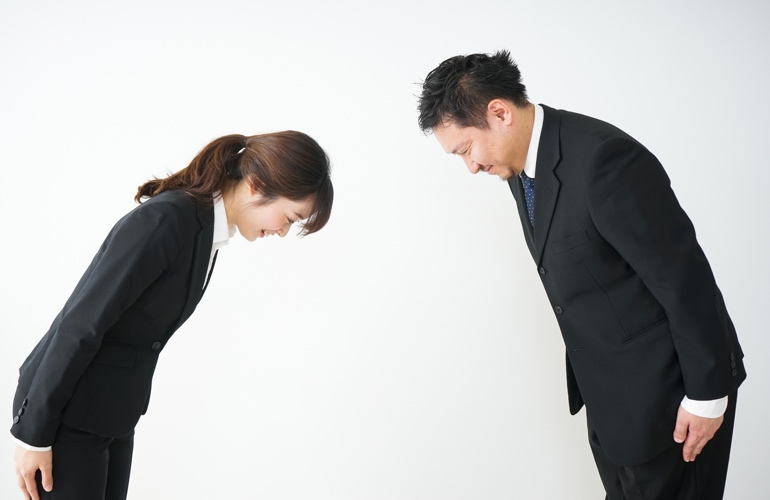
5. Sumo wrestlers throw salt in the ring
Sumo is the pride of Japanese sport and a symbol of Japanese cultural quintessence. It is a ritual lasted over 1000 years and originated as a religious ceremony to show respect to Shinto deities. Before each match, the wrestlers often perform throwing salt ritual to dispel the demons and prove themselves innocent. Some of the wrestlers are very good at expressing themselves by throwing salt up to the ceiling. Moreover, they also pray for a safe game. The salt is also good as a disinfectant for their scratches.
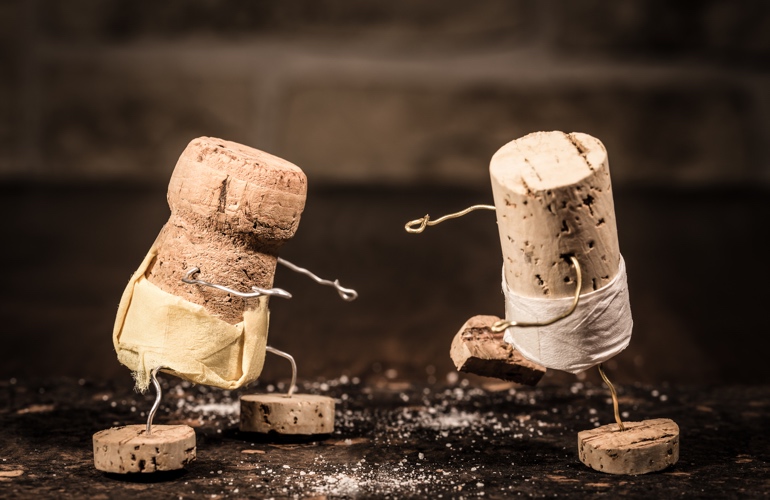
6. Seiza sitting
Seiza is a traditional Japanese way of sitting on the Tatami floor (Tatami- type of mat used as a flooring material in traditional Japanese-style rooms). It is recognized as the most standard style of sitting of the Japanese. In essence, sitting seiza is a combination of meditation and sitting posture from the Edo period. This type of sitting is also a challenge for many people. Its purpose is to remind people to always live meaningful, humble and self-restraint in every situation.
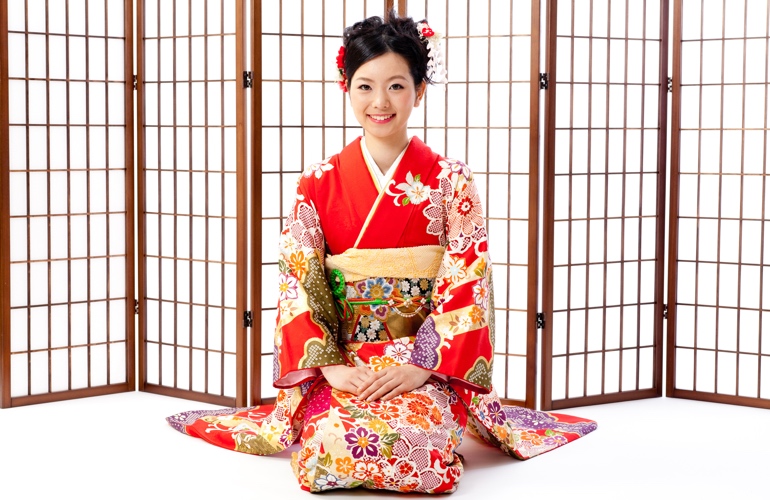
7. Loincloths worn at festivals
The loincloth is called Fundoshi in Japanese, this is a kind of men's underwear from the old days. However, today, people still wear the loincloth especially in festivals and also for the sumo matches.
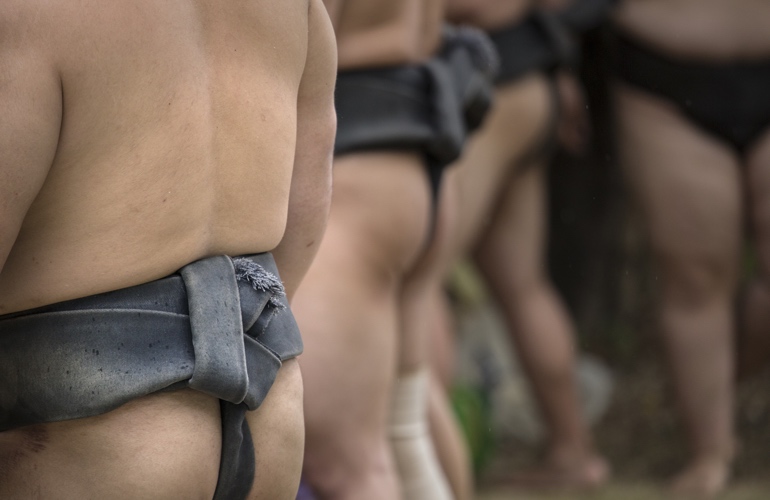
8. Others strangeness in Japanese culture
Japan has some of the following cultural features that will surprise any traveler that will come here:
- Give the new year's gifts and the gifts for the mid-autumn festival
- Do not give tip for the locals when in Japan
- Before entering the house, take off the shoes turned their nose facing outside
- Eat live foods like fish, shrimp, …
- Make noise when eating Ramen noodles because according to the Japanese concept, it is the way show to the chef that the dish is very delicious
